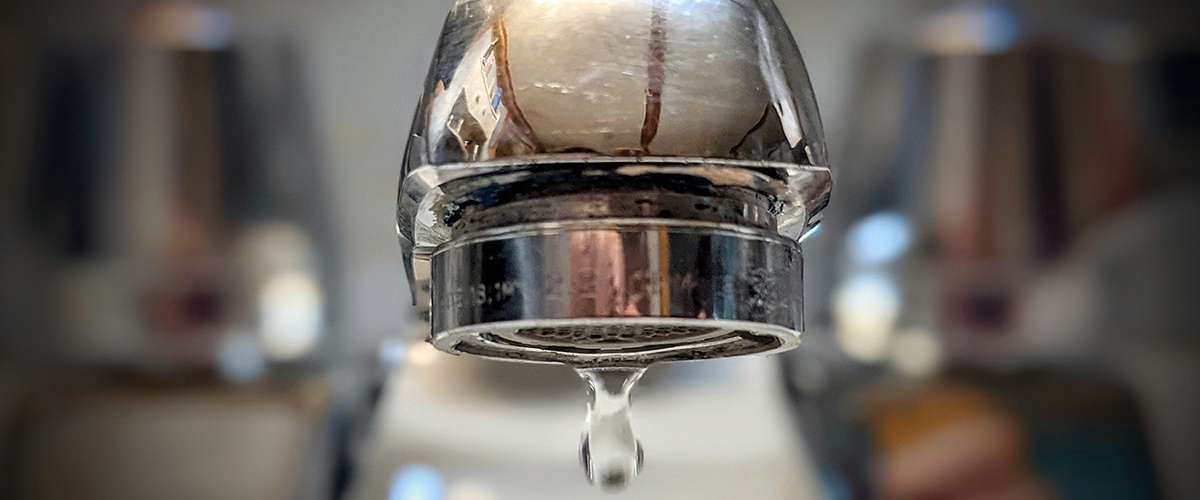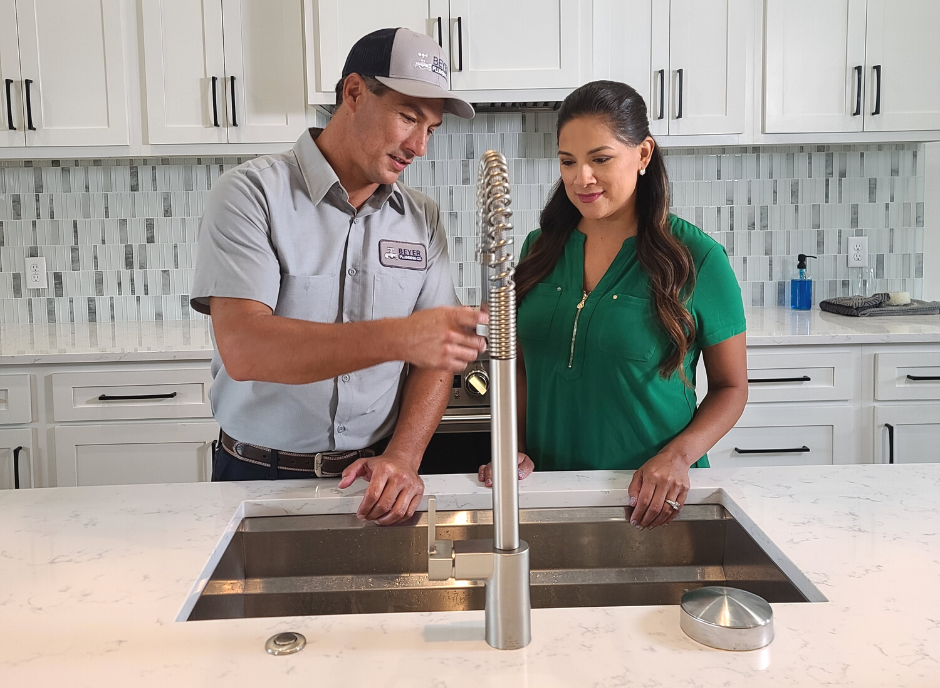What It's Important to Repair a Leaking Faucet
What It's Important to Repair a Leaking Faucet
Blog Article
The content following next pertaining to 4 Common Reasons for a Leaky Faucet is extremely interesting. Don't skip it.

Leaking faucets could seem like a minor aggravation, but their impact exceeds just the annoyance of the audio. From drainage to incurring unnecessary financial costs and health risks, ignoring a dripping tap can cause different consequences. In this post, we'll look into why it's crucial to address this typical house problem without delay and successfully.
Waste of Water
Environmental Influence
Trickling faucets add significantly to water waste. According to the Epa (EPA), a single faucet dripping at one drip per secondly can throw away more than 3,000 gallons of water annually. This not just pressures water sources yet additionally influences environments and wildlife based on them.
Financial Expenses
Enhanced Water Expenses
Past the environmental influence, dripping faucets can inflate water costs significantly. The collected wastage in time translates right into greater utility expenditures, which can have been prevented with prompt repair services.
Potential Residential Or Commercial Property Damages
Moreover, prolonged dripping can cause harm to components and surfaces bordering the tap. Water build-up can trigger staining, rust, and even structural concerns if left unattended, causing additional repair service costs.
Health Concerns
Mold And Mildew and Mildew Growth
The continuous presence of dampness from a trickling faucet produces an optimal setting for mold and mildew and mildew growth. These fungi not just jeopardize indoor air top quality yet additionally position health dangers, particularly for individuals with respiratory conditions or allergic reactions.
Waterborne Diseases
Stationary water in trickling taps can come to be a breeding place for bacteria and other microorganisms, increasing the threat of waterborne diseases. Pollutants such as Legionella microorganisms prosper in stagnant water, possibly resulting in serious health problems when consumed or breathed in.
DIY vs. Specialist Fixing
Pros and Cons of Do It Yourself Repair Work
While some might attempt to deal with a leaking faucet themselves, DIY repair work come with their very own set of difficulties. Without appropriate knowledge and devices, do it yourself efforts can worsen the concern or lead to insufficient repair services, extending the issue.
Benefits of Employing a Professional Plumber
Working with a specialist plumber makes certain that the underlying source of the leaking tap is attended to successfully. Plumbers possess the know-how and equipment to diagnose and repair tap issues efficiently, saving time and decreasing the risk of more damage.
Step-by-Step Overview to Taking Care Of a Dripping Faucet
Tools Required
Prior to attempting to fix a leaking tap, gather the necessary devices, consisting of a flexible wrench, screwdrivers, substitute parts (such as washers or cartridges), and plumber's tape.
Usual Faucet Issues and Their Solutions
Determine the kind of tap and the specific problem triggering the drip. Common troubles include damaged washers, rusty valve seats, or damaged O-rings. Refer to maker directions or on the internet tutorials for detailed advice on repairs.
Safety nets
Normal Maintenance Tips
To prevent trickling faucets, do regular upkeep such as cleaning up aerators, checking for leakages, and changing worn-out components promptly. In addition, take into consideration setting up water-saving tools or updating to much more effective components.
Relevance of Prompt Repairs
Resolving dripping taps as soon as they're seen stops additional water wastage and potential damage, ultimately saving both water and cash over time.
Influence On Residential Or Commercial Property Value
Perception of Well-Maintained Property
Maintaining a building in good condition, including dealing with maintenance issues like dripping taps, enhances its perceived worth and charm amongst potential buyers or renters.
Influence on Resale Value
Properties with well-maintained plumbing components, consisting of faucets, command higher resale worths in the property market. Addressing dripping taps can add to a favorable impression during residential property evaluations and arrangements.
Environmental Obligation
Individual Contribution to Conservation
Taking duty for taking care of leaking faucets straightens with broader efforts toward water conservation and ecological sustainability. Every individual's actions jointly make a substantial influence on preserving priceless sources.
Lasting Living Practices
By focusing on prompt repairs and taking on water-saving routines, individuals contribute to lasting living methods that benefit both existing and future generations.
Verdict
Attending to a trickling tap surpasses simple convenience; it's a crucial step towards saving water, lowering economic expenses, and protecting health and wellness and building. Whether via DIY repairs or professional assistance, taking action to deal with trickling taps is a tiny yet impactful method to advertise accountable stewardship of resources and add to a healthier, extra sustainable future.
How to Fix a Dripping or Leaky Faucet
A leaking faucet is one of the most common problems that homeowners encounter, but it being commonplace doesn’t make it any less annoying. The constant drip drip drip of a leaking bathtub faucet, showerhead, or sink tap can disturb your home’s serenity. Left neglected, a dripping faucet can also result in higher water bills and discoloration or mold growth in your sink or plumbing fixtures.
Fortunately, you don’t have to be a trained plumber to know how to stop a dripping faucet. With some basic tools, replacement parts, and a little patience, leaky faucet repair is a breeze. In this article, we’ll explain what causes dripping faucets and how you can fix them.
What Causes a Leaking Faucet?
Kitchen and bathroom faucets come in all manner of designs, but most involve some combination of valves, O-rings, seals, and washers. The O-ring is usually the weakest link, but any one of these pieces can wear down over time. Heat, moisture, temperature fluctuations, minerals, mold, and movement can contribute to warping and corrosion, breaking the watertight seal. This just comes with the territory of being a homeowner. Everything is always subject to wear and tear, and some component parts of your appliances and fixtures need to be replaced on occasion. At least replacement O-rings are cheap!
More rarely, dripping faucets can be a symptom of excessively high water pressure. Were this the case in your home, you would probably notice that the leak is not isolated to one faucet. Water pressure issues are harder to resolve on your own. We recommend contacting a professional plumber if you suspect your water pressure is too high.
How to Fix a Dripping Faucet
Pipe wrench or monkey wrench Allen wrench set Screwdrivers Old towel or rag Shut off the water.
Before you do anything, you need to turn off the water to keep from drenching your kitchen or bathroom. You should find a valve under the sink and against the wall. Once you’ve turned this valve, try turning the faucet on to confirm that the water source has been cut off.
If you can’t locate your local valve for the faucet you’re working on, you can always shut off the water to the house at the main valve. Of course, this will prohibit anyone from using the sinks, showers, or toilets while you’re working on the faucet that’s giving you trouble.
Plug or block the drain.
You’ll be disassembling the faucet and removing some small bits of hardware. Plug the drain with a stopper or rag to avoid the possibility of a small screw falling into your P-trap.
Take apart the faucet assembly.
There are several varieties of kitchen and bathroom faucets, each with its own manner of assembly. For detailed instructions on how to disassemble your faucet, you can refer to the fixture’s manual or contact the manufacturer. If you know whether you have a ball, disc, cartridge, or compression faucet, you can find detailed schematics online.
In general, you need to begin by removing the faucet handles. You might notice a small screw that you’ll need to remove with a screwdriver or Allen wrench. If you don’t see any visible securing hardware, it’s likely hidden under a decorative cap that can be unscrewed or popped off with flathead screwdriver.
Remove each piece methodically, consulting a schematic when necessary. Take notes or arrange the pieces in such a way to make it easier to correctly reassemble the faucet later.
Remove the cartridge.
Once you’ve removed the handles and securing hardware, you should be able to remove the valve cartridge or stem. Some cartridges will slide right out. Other faucet models will require you to loosen a nut with a pipe wrench before you can remove the valve stem.
Examine the exposed hardware.
With the cartridge or stem removed, inspect the component parts. Check the rubber O-rings for wear and tear. Also examine the seat washer for corrosion or other damage. These pieces are usually the responsible parties for a dripping faucet, but it’s worth inspecting the other component parts while you have the faucet disassembled.
Find replacement parts.
Once you’ve identified which faucet component has failed, find an identical replacement. Your local hardware store should have O-rings, seat washers, and other standard components in stock. If you have a luxury or uncommon faucet, you may have to contact the manufacturer for a replacement part.
It’s a good idea to take your old parts with you to the hardware store so you can compare them with the store’s inventory and be sure you’re purchasing the correct replacement.
Reassemble the faucet.
With your new parts in hand, reconstruct the faucet and handles. Don’t be tempted to overtighten screws or nuts. You might think this could create a better seal, but it can instead damage or bend a delicate part of the assembly and create a new problem for you.
Turn on the water and test the faucet.
The only thing left to do is test your work. Unplug the sink, turn the water back on, and try the faucet. Congratulate yourself on a job well done!
https://www.libertyhomeguard.com/how-to-fix-a-dripping-or-leaky-faucet/

I'm very involved in and I hope you liked our piece. Are you aware of somebody who is inquisitive about the topic? Take a moment to share it. We value reading our article about Why Is It Important To Fix Your Leaking Tap/Faucet?.
Report this page